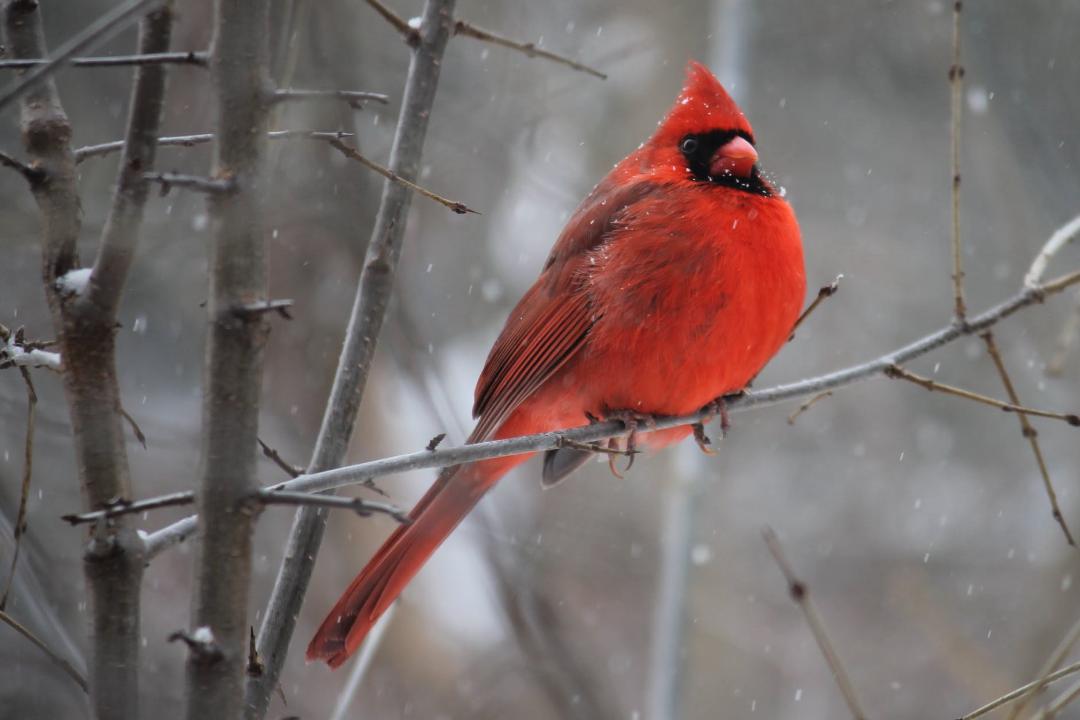
By Judy Ferring
Patrick County Master Gardeners
Bears, deer, turkeys and all their neighbors in the forests and fields of Patrick County are ordinarily quite capable of foraging for their own meals. It’s more of a challenge in the winter, however, so if you have a generous spirit, or simply want to observe the wildlife community more closely, go ahead.
But it will pay to do so judiciously, especially when it comes to the location of the treats you offer. There are several reasons.
First, Virginia has laws controlling the feeding of certain wildlife, especially game animals. For instance, it’s illegal to feed bears at any time. From September 1 through the first Saturday of January, it’s also illegal statewide to feed deer and elk – that’s considered unfair baiting. Further, four northwestern counties prohibit feeding deer at any time because of the appearance of chronic wasting disease (CWD), fatal to deer and easily spread. (There is no proof so far that CWD can infect humans.)
Second, feeding wildlife close to you home usually results in “habituation,” that is, they get used to your home as a reliable food source and become pests.
Third, it can be dangerous for the very animals you want to protect. This is especially true for birds.
Some experts recommend that any feeding station, including bird feeders, be at least 30 feet from the house. But this can be a double-edged sword. From that distance, many birds do not see your windows as obstacles and fly into them. Among the solutions: locate feeders within about three feet of the house so that the collisions are unlikely to be fatal; sunshades or awnings that cast shadows on the window; vertical stripes of removable white tape (available at many pet stores) to clue birds in to the obstacle ahead.
Fourth, the birds that come to your feeder may not be pesty, but the bears, opossums and squirrels that are also drawn probably will be. The menu isn’t especially important if the feeding is easy – the afore-mentioned habituation. Such uninvited visitors will often dump a garbage can or raid pet food dishes and chicken houses just as easily. This is where your choice of feeding location is more important than the menu.
It’s difficult to discourage deer from your garden in winter. Food is harder for them to find and tender shoots of young trees and bushes are very tempting. Many plants that are far from the house will help divert them: berry bushes, fruit trees, relatively remote gardens of carrots and turnips. After New Year’s you can put out flakes of hay.
If you’re constructing brush piles to protect and feed smaller animals, much of what you use will also attract deer: beech and birch limbs, rose canes (particularly wild roses), evergreen limbs with tender buds and pine cones, limbs crusted with lichen (a favorite winter food for deer, according to Jessica Allen and James Lendemer, authors of “Urban Lichens: A Field Guide for Northeastern North America).
Though they’re well-known for eating anything if they’re hungry enough, deer do have their favorites, according to the New York State Department of Environmental Conservation. Their preferences include apple, blueberry bushes, cedar, cucumber magnolia, certain dogwoods, elderberry, honeysuckle, certain maples, sassafras, staghorn sumac, willow and yew.
Brush piles that feature berries, nuts and seeds will provide food for many smaller animals. Sometimes, those diners become dinner. Mice that come to eat the seeds will be preyed on by opossums tolerate them even though they are not among the most cuddly of small animals. In spring and summer, opossums are useful for keeping populations of mice, insects, larva and slugs in check. They’ll need more than one brush pile, hollow log or burrow in winter though; opossums move to new digs frequently to avoid predators like foxes and coyotes.
Foxes need little help finding food in the winter. Their hearing is so sharp that they are said to be able to track a mouse 100 yards away. And they stash any surplus food in hidden caches against days when food supplies are short.
Concentrating on location rather than menu simplifies winter wildlife care. Much of it consists of thoughtful location of feeding stations and foregoing the purchase of special feeds. Many local gardeners have already embraced recent advice to allow leaves and weeds to remain on the ground to preserve the insects that birds will need over winter.
If a neat and tidy lawn and garden still appeals strongly to you, try raking some of that detritus into a couple of hidden corners till spring. March clean-up can be even easier if you tie bunches of twigs, sunflower stalks, etc., into bundles to provide these much-needed winter quarters and dining hot spots.







